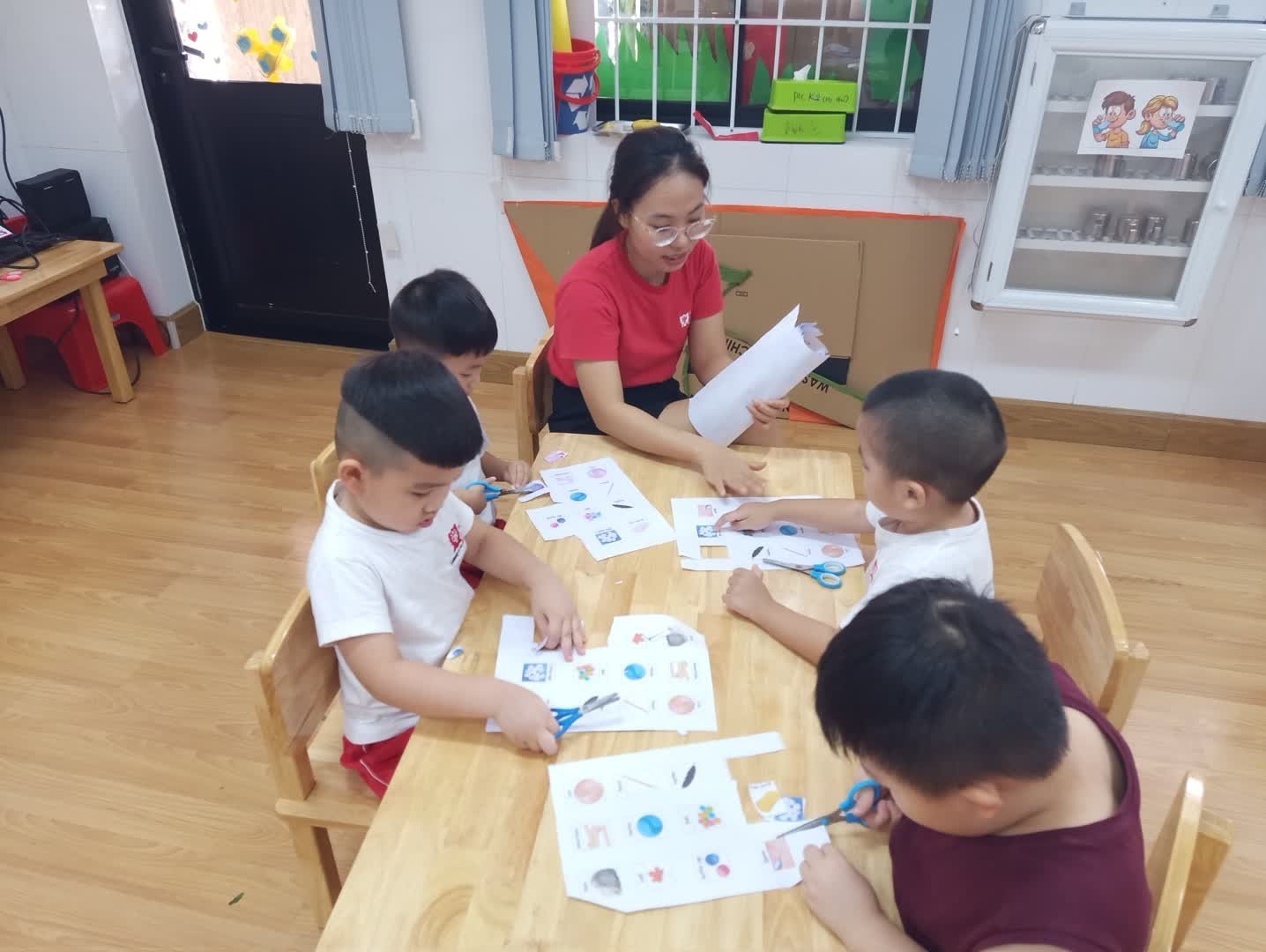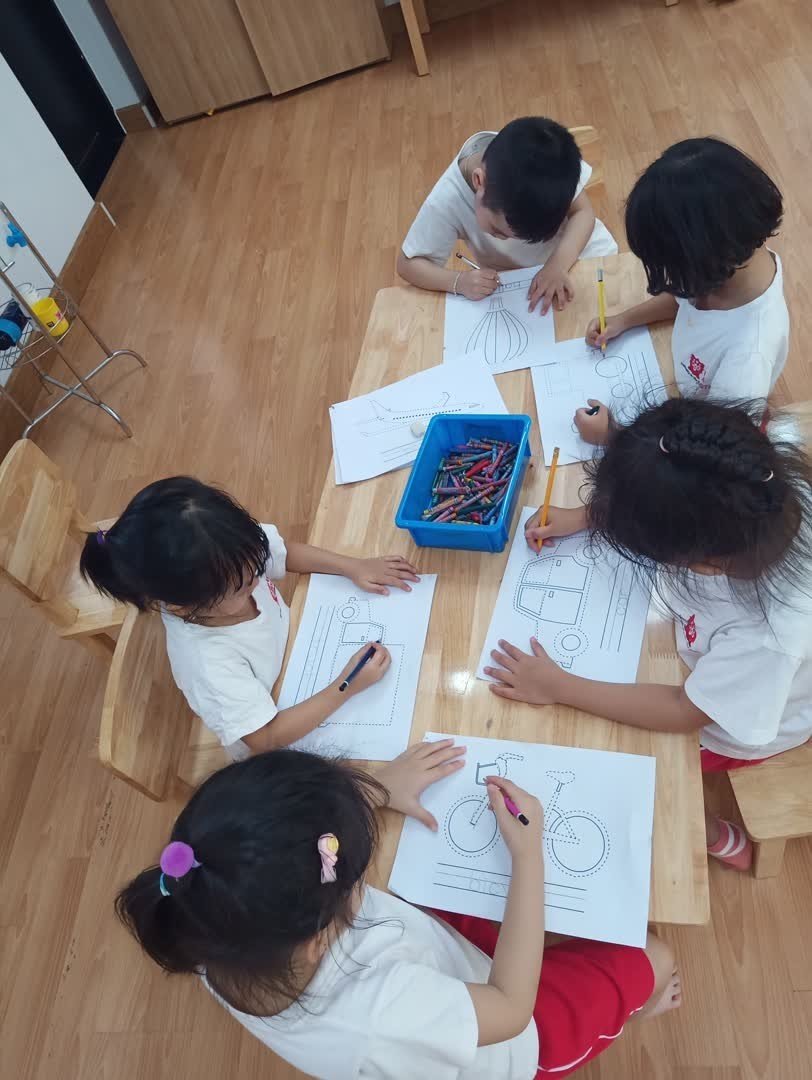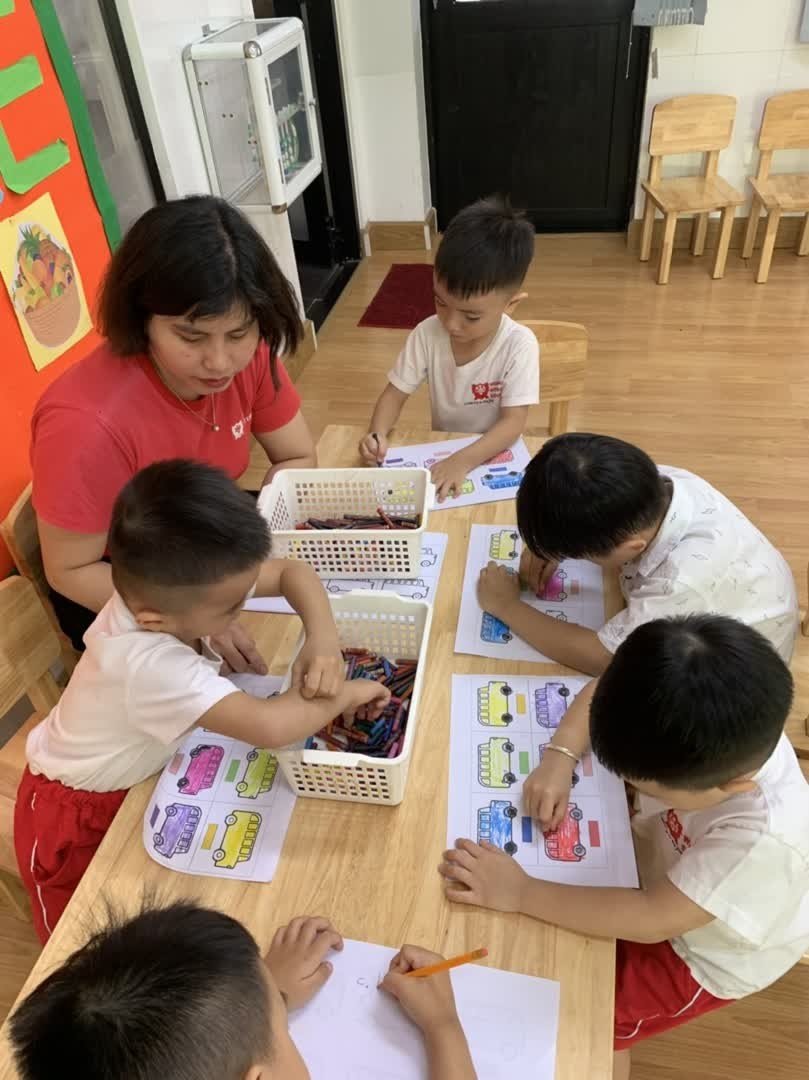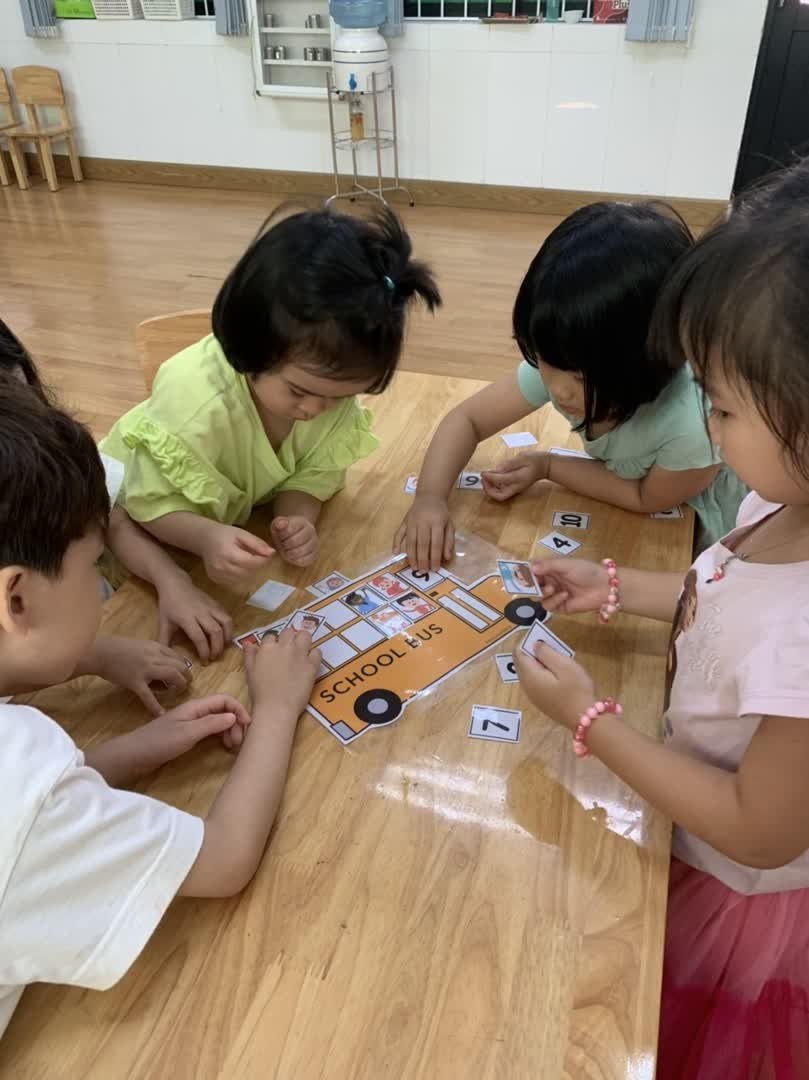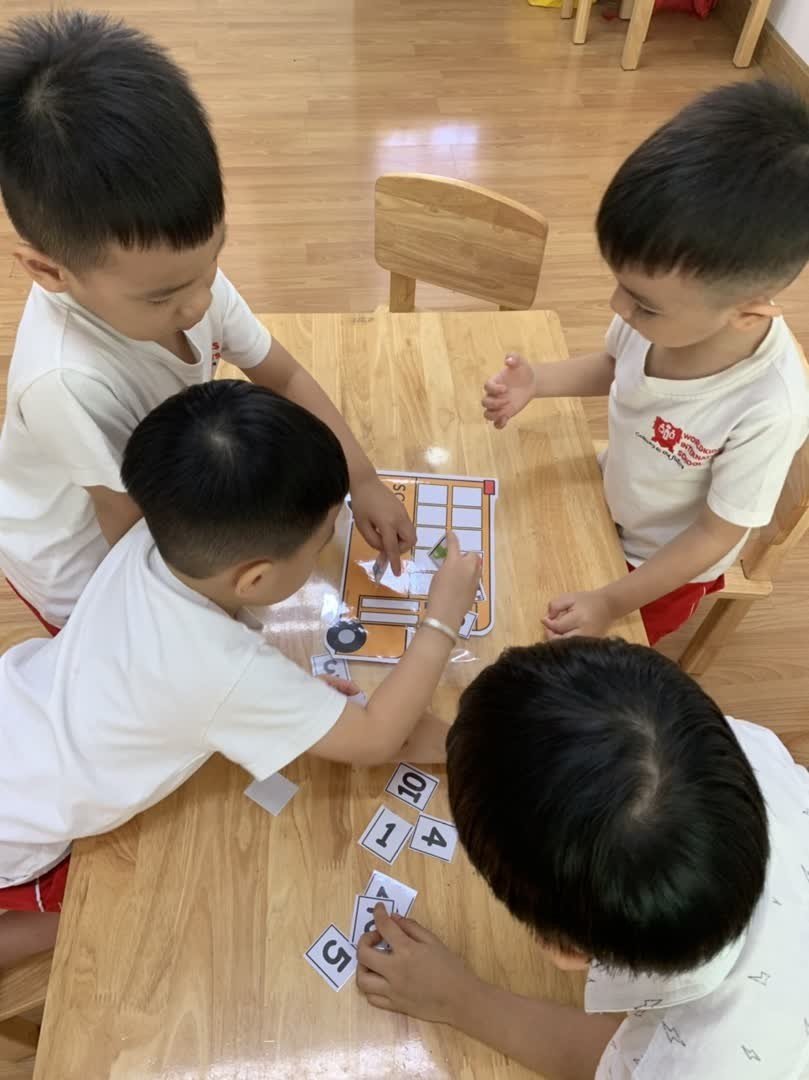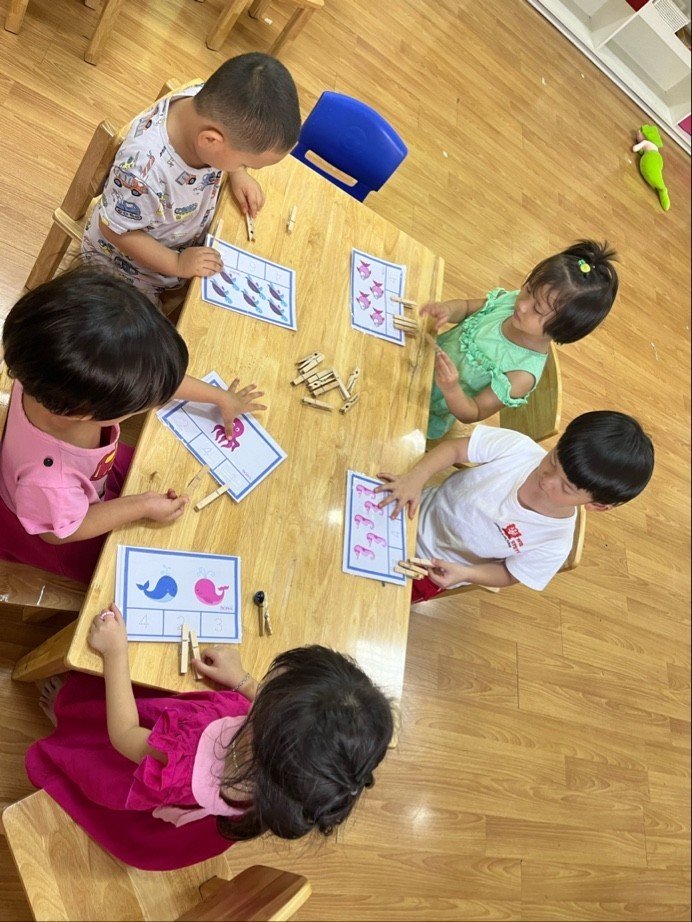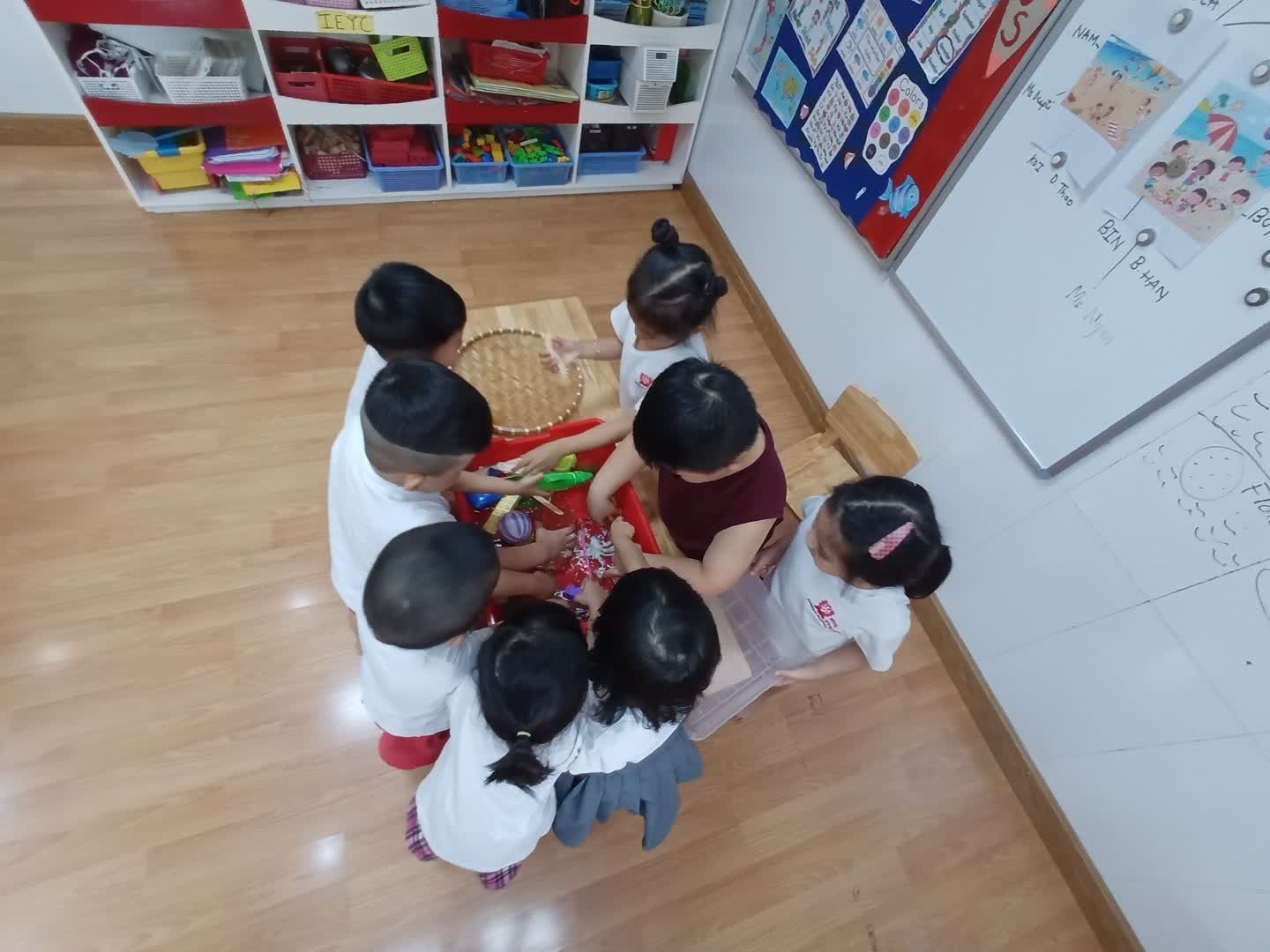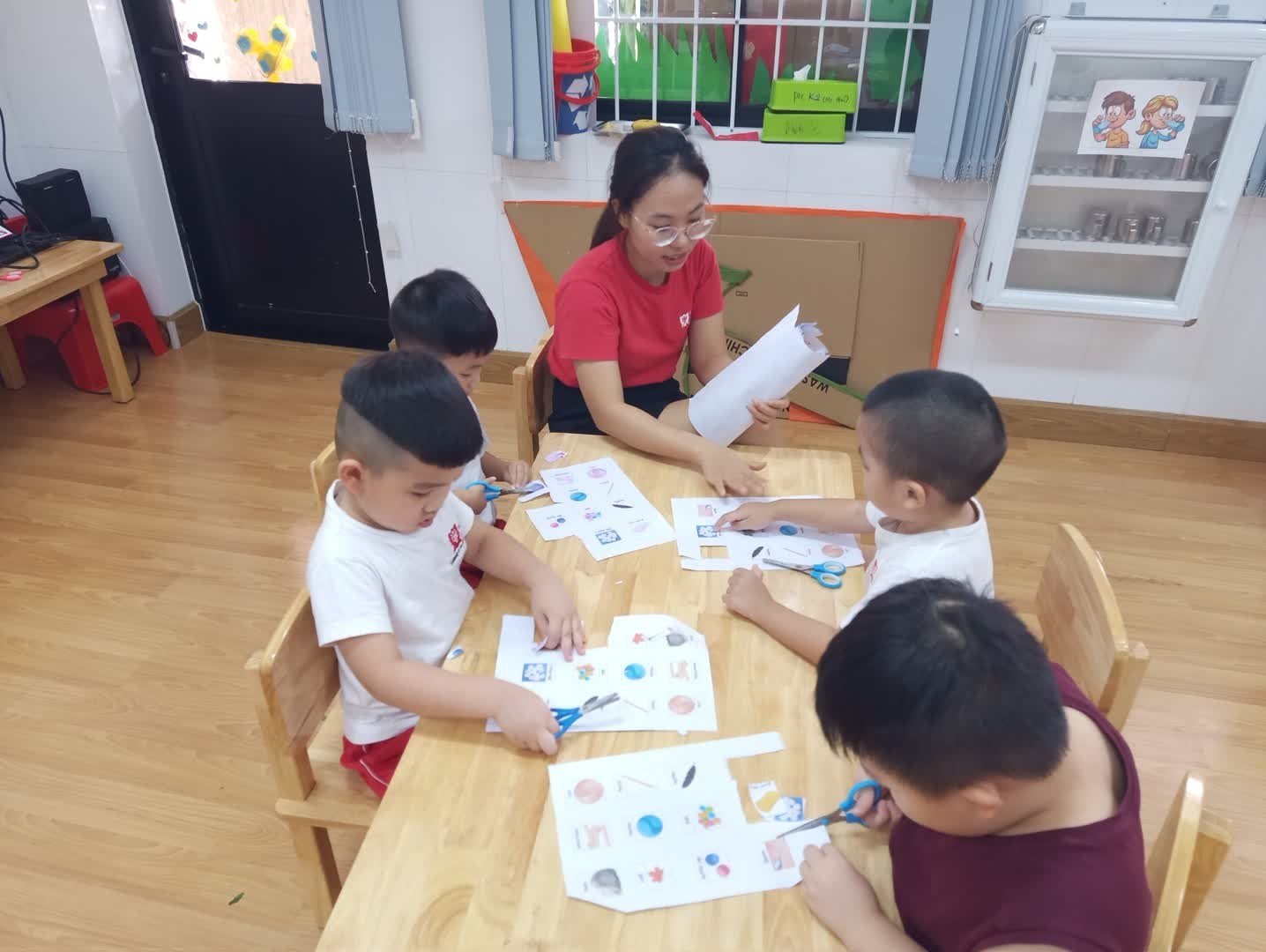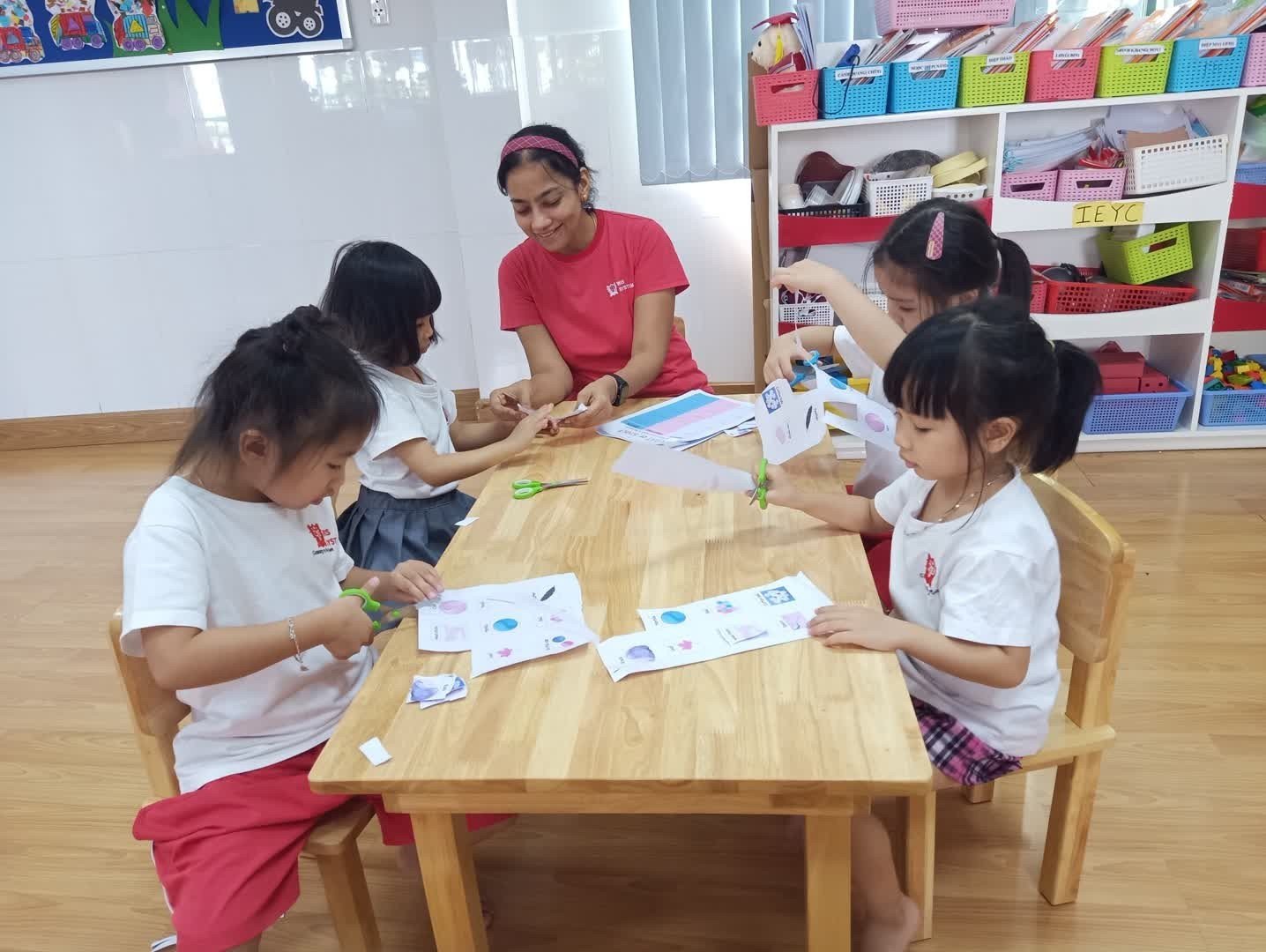How do children learn and practice in the classroom at WIS? Let’s read the article below to see how WIS helps children optimize practice time and bring more learning experiences to children.
First, let’s find out what learning centers are and why they are essential in an early childhood education environment.
In short, learning centers are ways of dividing a classroom into different learning areas. A learning area will carry out an activity to develop additional skills according to the lesson’s objectives.
Learning corners play a vital role in the preschool learning environment because:
1. They allow children to choose to learn and/or play at a center according to their interests, and it stimulates children’s excitement and initiative in learning
2. As students practice and explore knowledge and skills in small groups, teachers can observe and guide children carefully and interact with them better, improving learning quality.
3. In a lesson topic, children can practice and develop many different skills at each learning center (fine motor skills, cognition, language, senses, emotional intelligence, social skills, etc.)
4. It is easy for teachers to have various activities according to children’s interests and at different levels of difficulty that are suitable for a wide range of students in the class.
5. Children have fun learning actively and independently.
6. Students can work independently, in pairs, or groups. By collaborating and talking with peers, children learn practical life skills such as expressing their thinking, sharing, and supporting each other.
Indeed, learning centers bring a lot of benefits to early childhood education. How has WIS applied learning centers in each IEYC lesson?
For parents who need to learn more about IEYC, this is an International Yearly Year Curriculum built on the quintessence of early childhood education of 4 countries with the world’s leading education quality (Singapore, New Zealand, Sweden, and the UK). In addition, IEYC was developed under the United Nations Convention on the Rights of the Child and research on child development from the Research on Child Development Department at Harvard University.
An IEYC learning unit usually lasts eight weeks, giving children enough time to research and discover the topics and satisfy their curiosity.
An IEYC lesson at WIS will go from Explore to Express. During the Express stage, children will be divided into groups. Each group will first play and learn at a learning center. There will always be a main learning center focusing on exploiting the subject of learning, which is carried out by foreign teachers. Besides, there are at least two other learning centers. At these free-choice learning centers, children will join various activities that help them practice and develop different areas of learning, such as Math, Language, Creative Arts, etc., with the content related to the main learning topic. These free-choice centers are guided by experienced Vietnamese teachers of the class. Groups of students will be active in each learning center for some time and rotate to other learning centers under the direction of the teachers. This educational method with learning centers reduces passive time when children have to wait for their turn, diversifies learning experiences, and maintains children’s interest throughout the lesson. It is indeed a very effective learning method.
After finishing an IEYC learning unit of the IEYC, the children will review with the teacher what they have learned and look back on their achievements in Showtime activities. It plays a vital role as an effective assessment tool for children’s learning process and experience. It is a time when children can confidently demonstrate their English fluency and abilities to acquire knowledge in many fields.
Join WIS to have high-quality learning experiences.
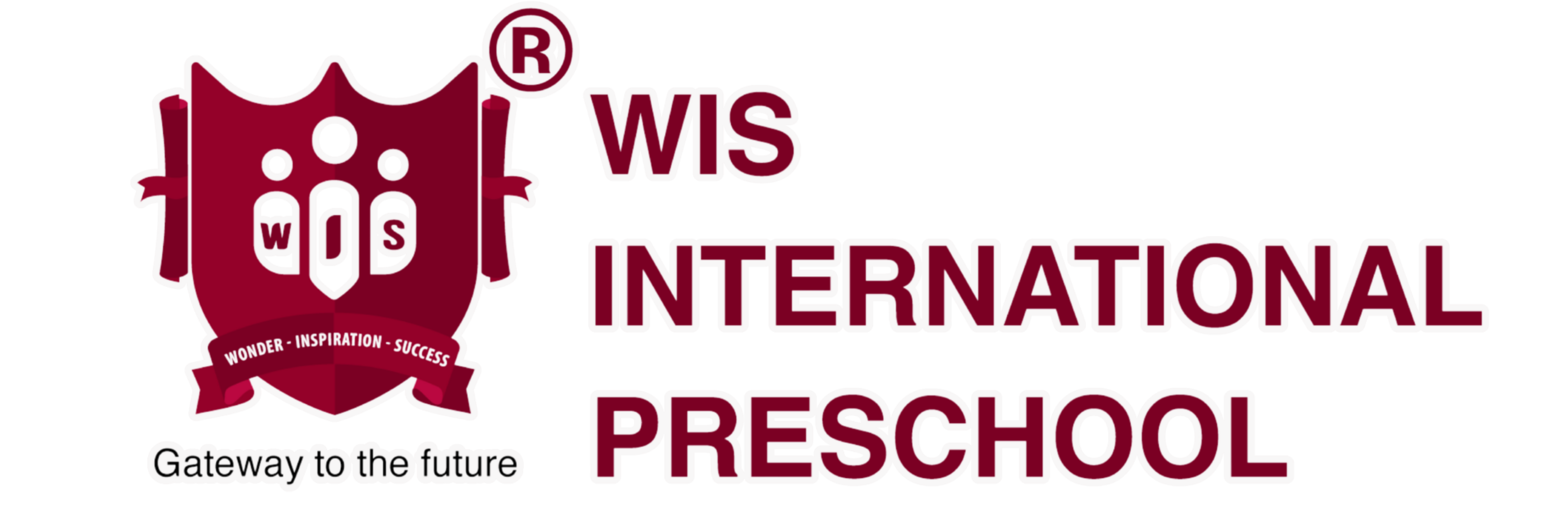

 Vi
Vi